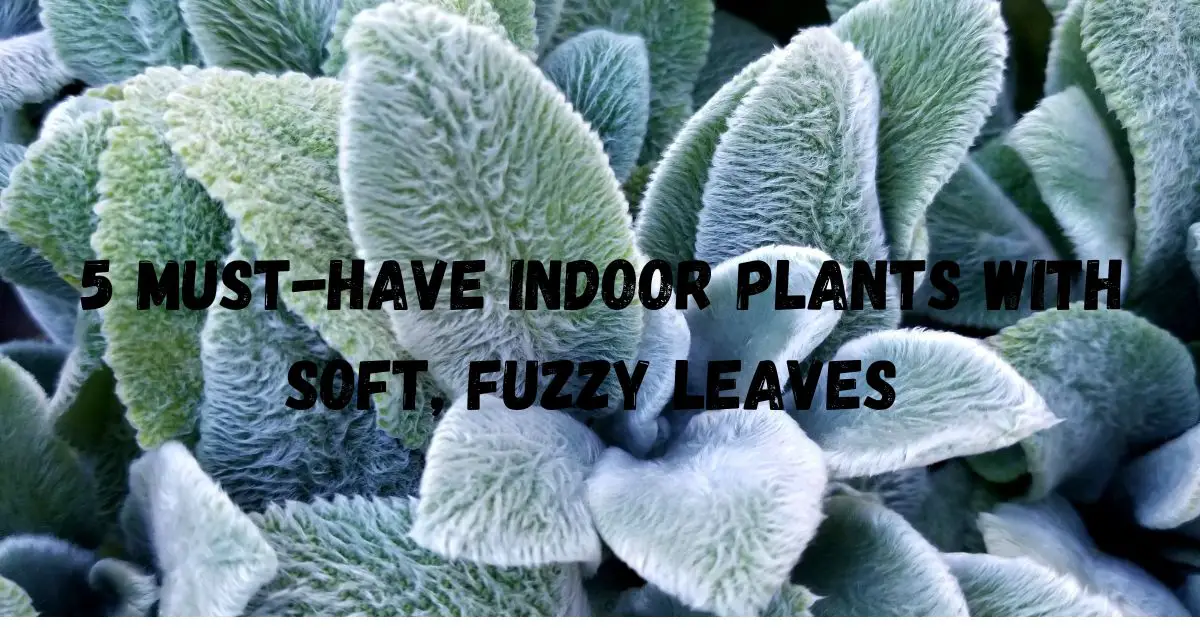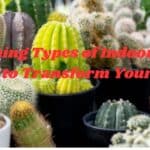Guide to Choosing Fuzzy Leaf Indoor Plants
Fuzzy leaves add a unique, soft texture that instantly elevates the charm of any indoor space. These velvety plants not only look inviting but also feel comforting to the touch, making them perfect for cozy home decor. Beyond their aesthetic appeal, many plants with fuzzy foliage, like lamb’s ear or African violets, are surprisingly hardy and easy to care for. They thrive in various conditions and bring a soothing, natural vibe to your living space. Adding a few of these soft-leaved beauties can transform your home into a tranquil, inviting haven.

Fuzzy Leaves: 7 Stunning Plants That Bring Soft Beauty to Your Home
Table of Contents
1. African Violet (Saintpaulia)
Description:
African Violets are valued for the tender, soft fuzzy leaves and bright flowers. There are several varieties of pink, purple, and white blossoms so their presence on a tabletop or windowsill is aesthetically pleasing.
Care Tips:
Light: Bright, indirect light.
Watering: The soil should be kept moist but not soggy, to avoid water collecting on the leaves.
Soil: Use a potting mix that is well-draining and specifically designed for African Violets.
Personal Experience:
I have raised African Violets for years, and they never fail to amaze me. Every time a new bloom opens, I feel a huge surging sense of pride. Just be gentle with their leaves; they get damaged easily from direct moisture.
2. Lamb’s Ear (Stachys byzantina)
Description:
Living up to its common name, Lamb’s Ear sports silvery, fuzzy leaves that are ear-shaped, much like a lamb’s ears. While it is far more commonly grown outside, it can thrive indoors if cared for correctly and provided with a bit more supplemental lighting.
Care Tips:
Light: This one prefers bright light or partial sun.
Water: Let the soil dry out between waterings so it doesn’t become prone to root rot.
Humidity: Lamb’s Ear likes low humidity for best growth.
Fun Fact:
A friend once gifted me this small pot of Lamb’s Ear as a weird addition to my indoor collection. This became one of my favourites and took a quirky beauty with soft fuzzy leaves and a unique texture.
3. Silver Satin Pothos (Scindapsus pictus)
Description:
Pothos Silver Satin particularly boasts in its trailing vines and heart-shaped, fuzzy leaves marked silver specks. The leaves on this plant are soft to the touch, which is good for touching for those who love it.
Care Tips:
Light: This plant thrives under bright indirect light but can tolerate low light.
Watering: Water when the top 1-2 inches of the soil dries.
Growth: This plant is great for hanging baskets or climbing support structures.
Pro Tip:
Prune regularly to attain the desired height and for fuller growth. The fuzzy texture of the leaves really makes this one variety of Pothos rather unique.
4. Panda Plant (Kalanchoe Tomentosa)
Description:
The Panda Plant is one striking succulent with gray-green, fuzzy leaves with hints of brown around the edges. Its soft velvety leaves give it that individuality and a cuddly feel that makes it one of the favourites for indoor plant collections.
Care Tips:
Light: Requires bright, indirect light.
Watering: Allow the soil to dry completely before watering.
Potting: Use a well-draining potting mix to avoid waterlogging.
Practical Advice:
Display your Panda Plant near a sunny window, and watch how it prospers. It is a great conversation- starter with many visitors inquiring to touch its fuzzy leaves.
5. Velvet Plant (Gynura Aurantiaca)
Description:
The Velvet Plant, also known as Purple Passion, features beautiful bright purple, fuzzy leaves. With these, it is a prominent piece in any setting.
Care Tips
Light: requires bright, indirect light.
Watering: Allow soil to stay moist but not flooded.
Temperature: Warm to hot indoors.
Real-Life Example:
One day, I discovered a Velvet Plant in a nursery. Its deep purple colour attracted my attention at once. It is now moved next to my reading corner to add a pop of flavour and comforting texture, which I don’t help touching constantly.
Why do I prefer soft, fuzzy-leafed indoor plants?
There’s something irresistibly attractive about soft-leaved plants. They invite being touched; more than any smooth-leaved plant varieties, they combine sensory experience into plant care. Beyond those tactile qualities, many of these plants have special purifying qualities in the air and add visual attractions to homes and offices.
Care Tips
Avoid Overwatering: Fuzzy-leaved plants get more root rot, so ensure proper drainage and wait for soil to dry slightly before watering.
Be Gentle: Handle leaves carefully to preserve their soft texture and prevent bruising.
Humidity Awareness: While some fuzzy plants like African Violets enjoy higher humidity, others prefer drier conditions. Know your plant’s needs!
Conclusion
In addition to their beauty, indoor plants with soft, fuzzy leaves will provide a sensory experience that calms the senses and elevates your indoor garden. Proper care through these unique plants will ensure that they thrive and delight you and your guests for years to come.
You can also read our other websites blog that help you also Indoor Plant Genius& Indoor Plant Guru
You may also like Stunning Indoor Plants with Pink Flowers to Brighten Your Home










